Today is a weird day. This weekend has been a weird weekend. The last 10 days have been too hectic for me (the reason why I haven’t posted to this space in as much time). And this blog post might be just a little offbeat, too.
Today is Mother’s Day, and I cannot help thinking of my mom. I lost her to pancreas cancer on February 26, 1997 — just over 10 years ago, and I’ve been thinking about her a lot recently.
Despite the consumerist overtones of this “holiday,” I think it’s wonderful that sons and daughters are pausing to thank their mothers for all of their sacrifices … and for giving them the gift of life. But if you’ve lost your mother, especially to cancer, a day like today can feel kind of destabilizing.
| Sketches of May 13 | ||||
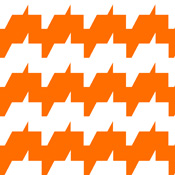 |
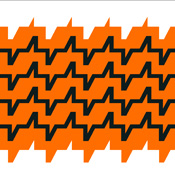 |
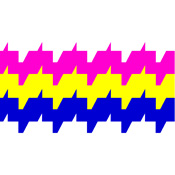 |
||
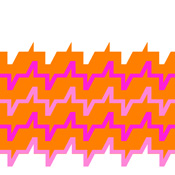 |
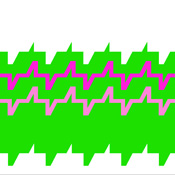 |
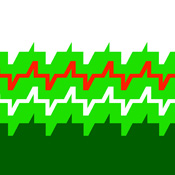 |
I don’t know how to celebrate this day, except for publicly admitting how much I owe to my mom, Alice Wiggins. She was an artist; she attended the Cleveland Institute of Art in the late 1940s and had a job for a few years illustrating cards at American Greetings.
She quit her illustration career to raise a family — my sister and my brother. I came along a lot later … the byproduct of a second marriage. But once I got old enough to take care of myself, my mom started teaching — her other passion — art and special education. (At one point, she taught my 9th grade art class; I called her “mom,” and she scolded, “That’s Mrs. Wiggins to you!”)
My mom had a lot of artistic hobbies, including painting, stained glass and dressmaking. And clearly, having an easel and art supplies around that exposed me to artmaking. When I was in college, I used to “steal” my mom’s paints and canvases, staying up late, experimenting with paint. And when I suggested to her that I take art lessons in college, she replied, “You don’t need that. They just stand over your shoulder and tell you what to do. I can tell you what to do.” She never really did give me a proper art lesson. And I still have never taken a formal art class.
Anyway, I have one last story to share, and then I’ll move on. After my mom underwent exploratory surgery for her tumors, back in June of ’96, I remember how she came out of her anesthetic really fast, not long after they had wheeled her into her recovery room. I sat on the bed, and we started talking.
“Grant, I want you to be happy in life,” she said. “I want you to do what you want to do.”
“I want to paint,” I replied, without hesitation.
“Then paint,” she said.
That conversation set everything into motion. From that moment, I decided that I was going to paint, with everything that I had, if only for the simple enjoyment of making something that I saw in my head and wanted to get out onto a canvas. I owe a lot of who I am today to my mom. And when she passed away, I felt like the sun had become extinguished, and I had lost my orbit. When the force that gives you life suddenly disappears, you’re on your own.
Then again, I do feel thankful that I at least could say my mom was alive for the first 23 years of my life. Not everyone is so fortunate.
Changing the subject: On Friday, I delivered FF0000uturo, my modern abstract art contribution to this year’s Arizona Biennial, which will soon open at the Tucson Museum of Art. The opening reception is next Friday, and I’m looking forward to it. I’m also looking forward to showing a larger-scale minimalist painting.
To me, there are a couple of reasons why I’ve veered off into minimalism over the past four years: 1.) I like minimalist painting and 2.) There needs to be more art that appreciates simplicity, in my opinion. The product of high minimalist painters of the 1960s and early 1970s is just kind of a blip on the art historical timeline. For example, Jo Baer only painted minimally for a handful of years before she started painting flowers (and I can understand why she changed things up).
The question of how to manage natural resources is massive challenge. The “haves” of the world have got to start learning how to live more simply. I think that there needs to be art that demonstrates an appreciation for simplicity. All sorts of art being made these days is high-concept and complicated. Compositionally complicated. I’d rather go the opposite direction. Like my friend Shawn Wolfe writes, “Consume Less is probably too mild of a self-sacrificing battle cry. How about Produce Less?” Agreed!
And Mark Ryan, an architect friend of mine told me once (and this is a paraphrase), “Simplicity is hard. Knowing when to stop is hard. It’s a difficult lesson for artists to learn.”
In closing: I leave you with my artist statement for the Arizona Biennial: “In my minimalism-inspired work, I aim to build upon the tradition of minimalist painting of the late 1950s through mid-1970s — from Barnett Newman and Ellsworth Kelly to Jo Baer and Frederick Hammersley — by working with eye-catching color schemes found in contemporary graphic design.
In a way, my paintings are distillations of things we see every day, such as product packaging and semi-truck graphics. I’m inspired by the seemingly infinite combination of shapes and colors. However, my work offers no ostensible representational content, which might help to explain my paintings’ names. They are what you see them as being.
But why minimalism? Decades ago, minimalism was a turning of the tide away from Abstract Expressionism. For me, minimalism is about something else. It’s a visual antidote to overconsumption — e.g., the din of advertising, Christmas decorations reaching retail shelves around Labor Day, and vehicles that get 12 miles per gallon. The question of how to conserve natural resources is coursing through our zeitgeist. I’m exploring ways of saying and doing more with less, seeing beauty in simplicity more than ever.”